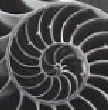
Problems for
Intermediate Methods in Theoretical Physics
Edward F. Redish
 |
Problems for |
Solution
The premises of this problem seem a tad bizarre (but it comes from a sci-fi novel so maybe they didn't do the calculation). If you want the top of your tower to be travelling at orbital speed this means that it must be the right speed to go around in orbit in exactly one day. This is the distance to a geosynchronous satellite's orbit -- about 20 thousand miles up, not 300 miles. Just for fun (and irrelevant to this problem) let's see how different the speed of the tower's top and a satellite in orbit are.
The satellite goes around the earth in about 90 minutes. (We can calculate this from setting mv2/r = GMm/r2 where v is the velocity of the satellite and r is the distance from the center of the earth = 6400 km + 300 km. The v is the distance/time = 2πr/T where T is the number of seconds to do an orbit. If you solve for T, you get about 5400 seconds - 90 minutes. So a satellite 300 km up needs to travel at a speed
in order to stay in orbit.
The top of the tower is moving at (now we take T = 1 day = 86,400 s)
So at the top of a 300 km tower, you can't just "step into orbit." You have to launch at a speed of about 3 km/s. That will save you a lot of fuel, however.
Now let's solve the problem. We're estimating the weight of a tower that is 300 km high and has a base that's 10 miles square. (DC is a 10 mi x 10 mi square with a corner cut out. I'll ignore the cutout Alexandria.) Let's keep our units consistent. 10 mi = 1.6 km so the area is about 2.5 km2 = 2.5 x 106 m2. The tower doesn't have to be solid. Let's try making it a thin shell so it's not so heavy. We can let it taper to a point. If its 4 sides are each long, skinny, isosceles triangle with a width of 1600 m at the bottom and say 50 m at the top, the top is skinny enough compared to the bottom that we could take it to be a point. (A real triangle instead of a sharp rhombus.) Then the area of one side would be
Let's take the walls to be 100 m thick. Each side would then have a volume of 2.4 x 1010 m3. A cubic meter of water has a mass of 1 metric ton. (Water has a density of 1 g/cm3 so 1 m3 = 106 cm3 has a mass of 106 g = 103 kg.) If the density is 5 x that of water, 4 sides (we might get away with 3!) would have a mass of
The weight would then be about
The gravitational field drops a little bit as we go up, but only by the square of the distance from the center of the earth, so the gravitational force on a kg of mass at the top of the tower is less than the gravitational force on a kg of mass at the bottom by a factor of (6400/6700)2 ~ 0.91 or about 10% less. We are not anywhere near this accuracy so we don't have to include this effect.
If we were engineers, we would now have to go further and calculate whether the base of the tower could stand the strain. Probably not, given standard modern materials.
Just to get an idea of what's happening, lets calculate the pressure on the base, assuming the weight is uniformly distributed by the whole area. (This would take some interesting architectural arrangment to get this to happen.) The area of the base is 100 km2 = 108 m2. The weight supported by the base is 5 x 1015 N. The pressure is F/A = (5 x 1015 N)/(108 m2) = 5 x 107 N/m2, 50 MPascals -- about 500 times as great as air pressure at sea level (= 100 kP).
| University of Maryland | Physics Department | Physics 374 Home |
|---|---|---|
 |
 |
 |
Last revision 2. November, 2004.